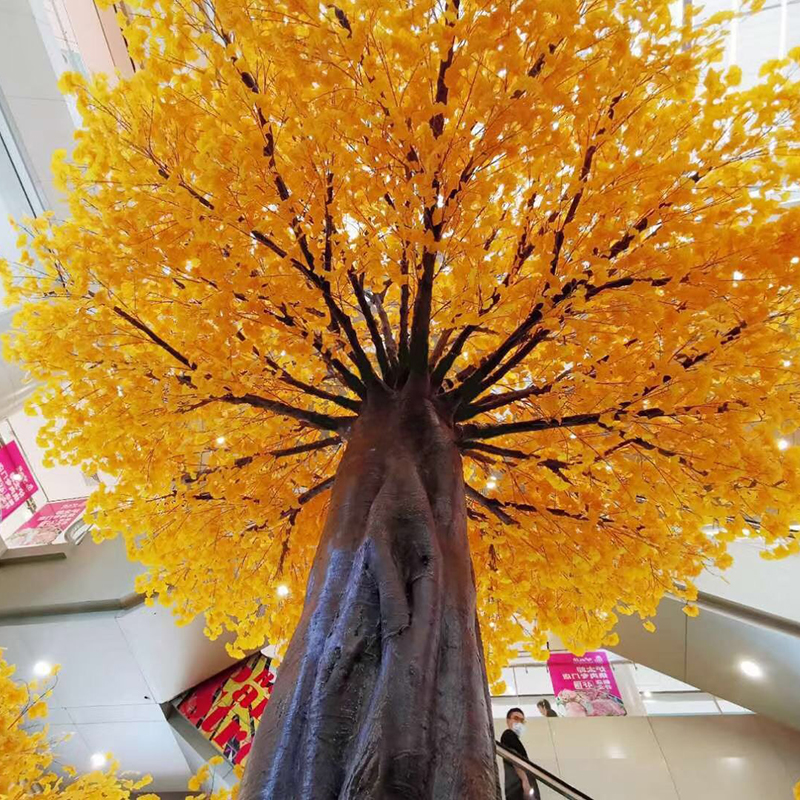
The artificial tree is a kind of tree decoration made of simulated ecological materials using modern technology. Compared with natural trees, it has the advantages of not requiring daily care and never withering, so it is widely used in urban greening, interior decoration, public place decoration and other fields. This article will introduce the characteristics, classification and application fields of artificial trees.

1. Characteristics of artificial trees
The main features of artificial trees are:
a. Never wither: Compared with real trees, artificial trees will never wither, never lose their leaves, and can maintain a beautiful appearance for a long time.
b. Time-saving and labor-saving: manual planting, watering, pruning and other work that consumes a lot of time and energy are not needed, which greatly saves management costs and human resources.
c. Easy to clean: artificial trees will not cause problems such as rot and leaf fall like natural trees, and they are also very convenient to clean.
2. Classification of artificial trees
At present, the common artificial tree varieties on the market mainly include the following categories:
a. Artificial plants: This kind of artificial tree is mainly various herbs, shrubs and flowers. The degree of simulation is very high, and it is generally impossible to distinguish the real from the fake by appearance.
b. Artificial tree: This kind of artificial tree is mainly various trees, artificial olive tree, bamboo, etc. It is characterized by thick trunk, dense branches, dense leaves, and the color and shape are not much different from real trees.
c. Optical fiber tree: This kind of artificial tree uses optical fiber as the main material. It has various shapes and can be transformed into various colors. It has high application value.
3. Application fields of artificial trees:
The application scenarios of artificial trees are very extensive, including the following aspects:
a. Building decoration: Artificial trees can be used as decorations on the facade of buildings to increase their aesthetics and cultural connotation.
b. Landscaping: Artificial trees can be used in parks, gardens, etc. to provide a beautiful environment for tourists.
c. Indoor decoration: Artificial trees can be used for decoration in offices, conference halls, shops and other indoor places to create a natural and comfortable atmosphere.
d. Holiday celebrations: Artificial trees can also be used as decorations for various festival celebrations, such as Christmas trees and New Year trees.

In short, the artificial plant tree is a modern simulation decoration, which has the advantages of never fading, saving time and effort, and being easy to clean. By choosing suitable artificial tree types and application scenarios, we can create more beautiful and natural visual effects for urban construction and living environment.